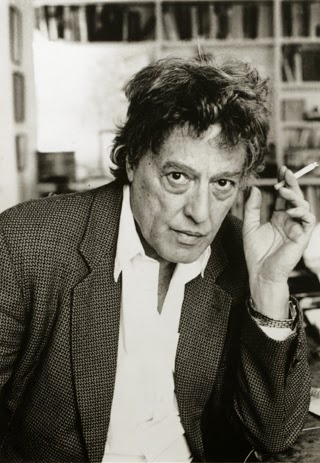Tom Stoppard and the Inspiration behind Indian Ink
By
Shannon Stockwell
 |
Tom Stoppard (photo by Amie Stamp)
|
Stoppard did not enjoy school and
dropped out when he was 17, taking a job at the Western Daily Press, a
newspaper in Bristol. He hoped to pursue a career in journalism, but while
working as a critic, he fell in love with the theater. His first play, A
Walk on the Water, introduced him to the agent Kenneth Ewing, who provided
Stoppard with the inspiration for Rosencrantz and Guildenstern
Are Dead.
The National Theatre in London produced
Rosencrantz and Guildenstern Are Dead at the
Old Vic in 1967, and later that same year, the play moved to Broadway. The
reviews were overwhelmingly positive, and the production won the Tony Award for
Best Play. Stoppard was just 27 years old.
Since the success of Rosencrantz
and Guildenstern, Stoppard continues to be an astoundingly
prolific playwright with a flair for intellectual themes and witty dialogue. In
1972, shortly after the premiere of The Real Inspector Hound, he
explained in an interview with Mel Gussow:
I suddenly worked this out: I write plays because writing dialogue is the only respectable way of contradicting yourself. I’m the kind of person who embarks on an endless leapfrog down the great moral issues. I put a position, rebut it, refute the rebuttal, and rebut the refutation. Forever. Endlessly.
Stoppard began writing In the Native
State as a radio play, which was commissioned by the BBC. “I had this tiny
notion that I could write a conversation between a poet and a painter,” he
remembered in a 1995 interview, again with Gussow. “While the poet was having
her portrait painted, she would be writing a poem about having her portrait
painted. There would be this circular situation. That’s all I had. And not
necessarily in India.”
Although the seminal image for the play
didn’t contain India, the country was always in Stoppard’s mind. “I had only
been thinking about [India] in the general sense of using what I’ve got,” he
said. “I’ve got India. It feels that one should be using it sometime sooner or
later.”
In another interview, he said that he
wanted to write about “the ethics of empire.” Whichever came first, the two
ideas—empire and the circular relationship between painter and poet—coalesced
in In the Native State, which aired in April 1991 and starred Felicity
Kendal as Flora Crewe.
Next, Stoppard adapted the play for the
stage, and Indian Ink premiered in London at the Aldwych Theatre in
February 1995. Indian Ink is often called Stoppard’s most
romantic play, its warmth a stark contrast to the intellectual debates that
typically mark his work. He agrees with this sentiment: “One of the things that
is nice about working on Indian Ink: there are no villains in it.
It’s a very cozy play in many ways. . . . I really enjoy its lack of radical
fierceness.”
For more about Indian Ink, be sure to read our latest edition of Words on Plays!
Click here to order online.
Click here to order online.
For tickets to Indian Ink visit act-sf.org/ink.

